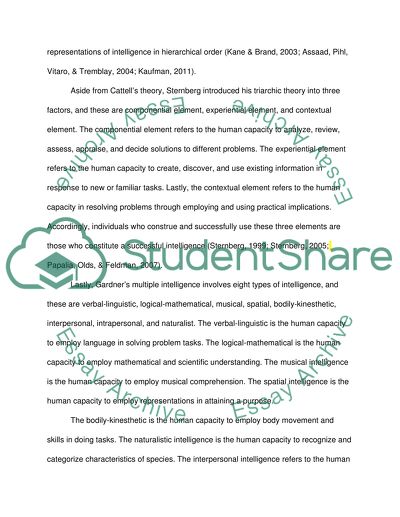Theories of Intelligence PS240 WK5 Term Paper Example | Topics and Well Written Essays - 500 words. Retrieved from https://studentshare.org/miscellaneous/1600439-theories-of-intelligence-ps240-wk5
Theories of Intelligence PS240 WK5 Term Paper Example | Topics and Well Written Essays - 500 Words. https://studentshare.org/miscellaneous/1600439-theories-of-intelligence-ps240-wk5.


